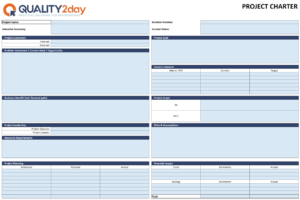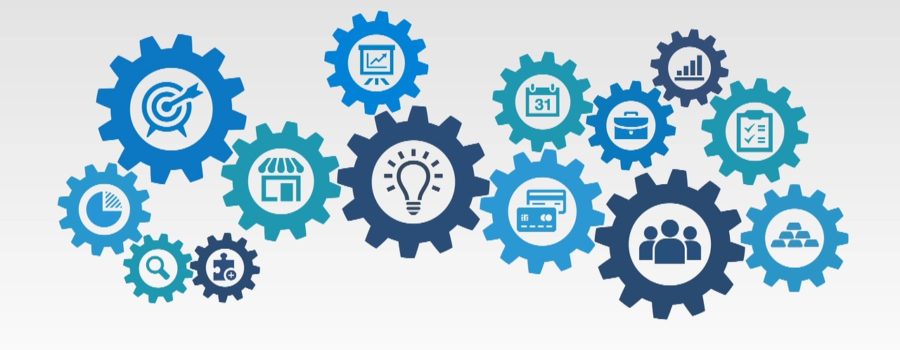Support business growth by identifying and addressing opportunities for improvement. The principle of change management has never been so prominent as it is today. It requires proper research, careful planning and effective execution. However, when approached with confidence and competence it can add value.
If you want to do something properly use the right tools to do it. It’s simple as that.
What is the advantage of the Project Charter over other continuous improvement documents?
In the world of business you can successfully launch any initiative providing that you have:
- Resource
- Robust action plan
- Measurable business benefit (read: savings!)
- Buy-in from the top management
Buy-in from the top management is the single most crucial component of Your success. You may have a team readily available to follow your plan. Your goal can be unquestionable. However, if there is no backing from the Top, then you are likely to stumble at some point or worst.
Reach out to stakeholders with different needs and expectations.
 Project Charter provides a comprehensive overview of an improvement/change initiative. It speaks a universal language that combines pure numbers with simple process mapping, action plan and definitions. The mixture of different types of information makes it so successful.
Project Charter provides a comprehensive overview of an improvement/change initiative. It speaks a universal language that combines pure numbers with simple process mapping, action plan and definitions. The mixture of different types of information makes it so successful.
Think of the Project Charter as if it was Your sales pitch.
Tell the management about your idea and how it will benefit the company. One page document is more than enough to make the point and secure the commitment. I want to share with you a practical example that will inspire you to kick off the next brilliant initiative.
You may want to download a FREE Project Charter template first.
So here it is…
Executive Summary
To develop & relaunch a functional, effective and user-friendly complaint management system leading to improved customer satisfaction and reduced cost of poor quality. Ensure full compliance throughout.
Problem statement/Current State/Opportunity
- Existing complaint management system is not considered “fit for purpose”. It lacks flexibility and is not user-friendly. The process is too long and encourages people to “skip it” to make things done quicker.
- The integrity of data is questionable. Data collection and analysis is not consistent.
- The reporting system is insufficient and not fit for purpose.
- Technical support for customers is limited.
- Replacement products are offered to customers when spare parts could be more cost and time effective. The current system makes it “easier” to order new products than parts to satisfy customer complaint.
- There is no active link between complaints and costs in ERP. The whole process needs to be re-defined incl. workflow, authority, accountability and reporting.
Business benefit
- Cost of poor quality reduced by 20%
- Improved customer experience
- The reduced number of customer complaints
- Clear cost allocation
Project goal
- An effective system to manage customer complaints
- Better control over the cost of poor quality
- The standardised and transparent reporting system
Success measure
- Product reject rate <2000ppm
- CoPQ reduced by 20%
- Value of credit notes reduced by 20%
Project scope
- IN: Complaint management system, aftersales process, quality assurance process, cost of poor quality, credit notes
- OUT: warranty definition, customer service, return to warehouse process
Risks & Assumptions
- Integrating processes in multiple locations will be challenging
- IT resources required to implement system changes can be a constraint
I have intentionally skipped some of the project charter sections (resource, customers etc.) as these are self-explanatory. If however, you need some more info feel free to send me a message via the contact form.



 Free Training Event – Skyrocket Your Career
Free Training Event – Skyrocket Your Career 
1 Comment
Leave your reply.